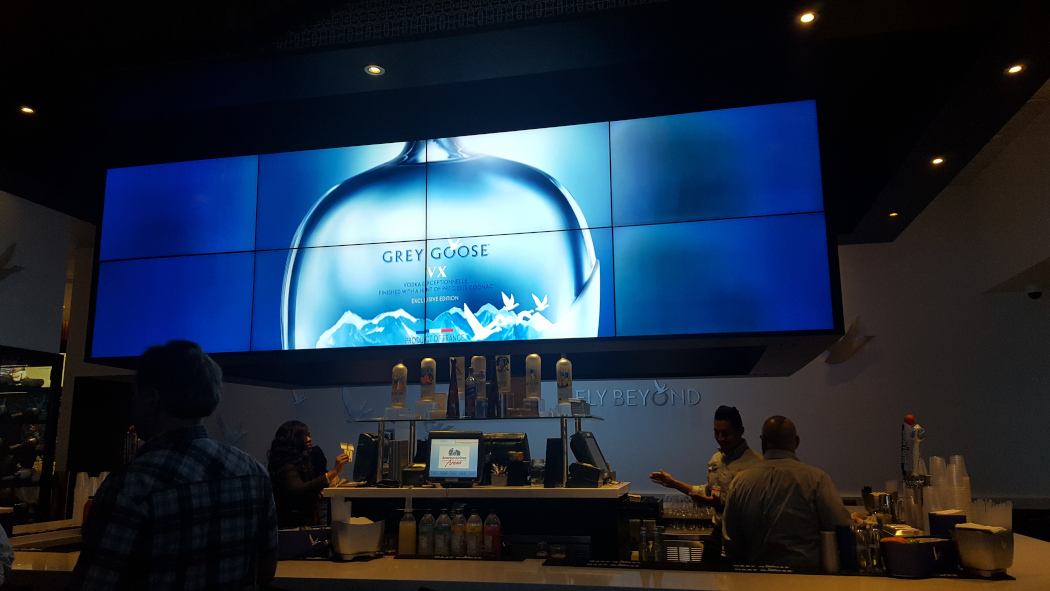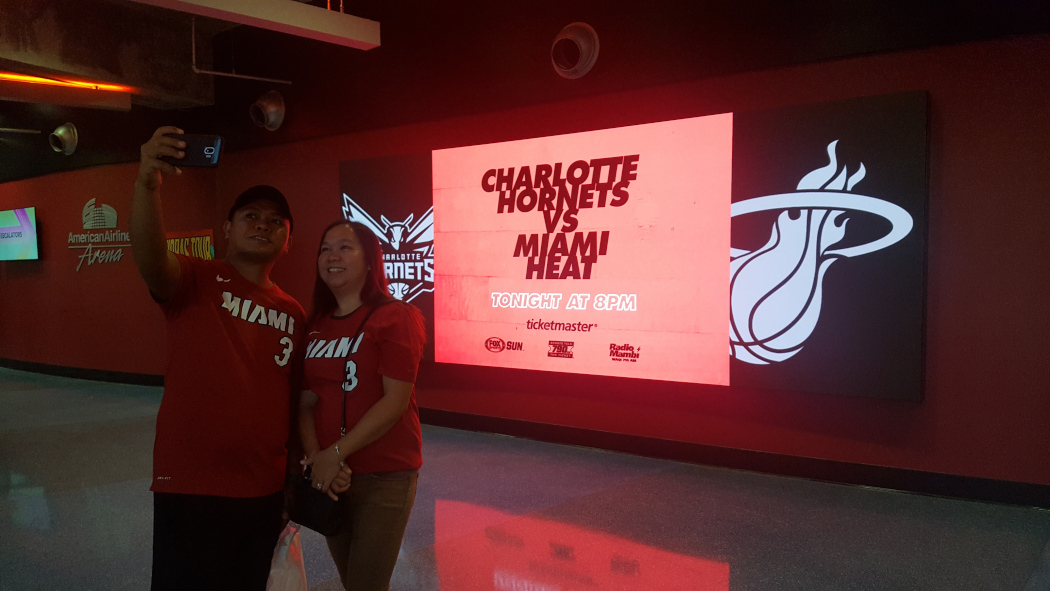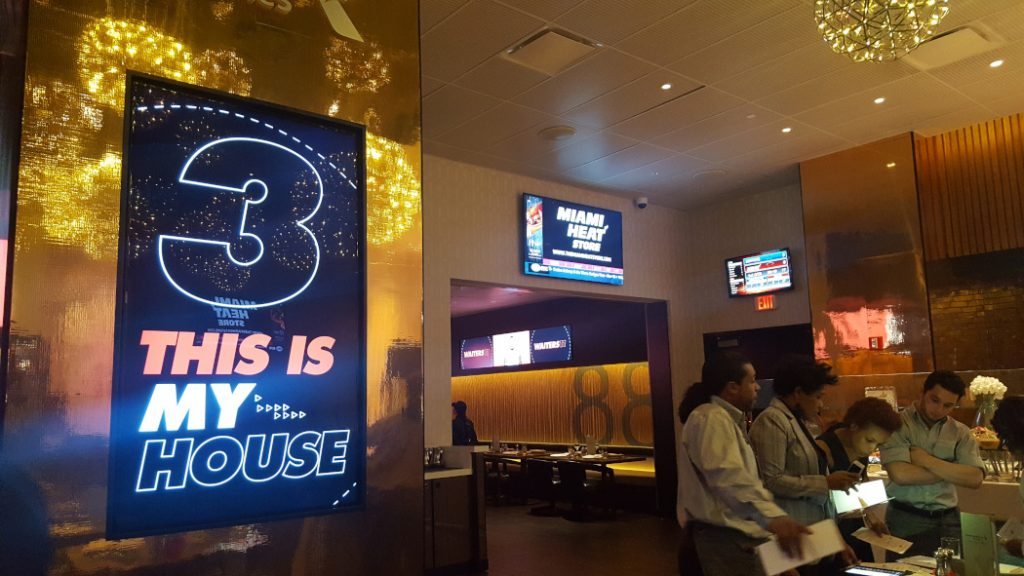On average, most professional sports venues refresh their technology once every seven years—or the amount of time it takes for a competing franchise to bring in something bigger, better and brighter. Visitors expect venues equipped with the latest technology, which will provide the ultimate fan experience in this increasingly competitive space. Digital displays are now found everywhere—from the concourses, to the locker rooms, to the suite level—in sports arenas. Not only do displays offer sponsors a new avenue for advertisements and opportunities for alternative content, but, in addition, they bring fans a new way to experience venues they’ve known for many years.
The path to becoming the best venue in professional sports requires a significant financial investment and time commitment, and effort from many parties. Making the decision to refresh a venue’s technology is just the first step. What could be a multi-year process starts with a series of thorough walkthroughs to evaluate the goals of each facility and how the future enhancements will fit into the overall vision for the space. The walkthroughs include an evaluation of existing technology and an assessment of how the new technology will interact, as well as identifying new spaces for displays.
American Airlines Arena (AAA), located in the heart of downtown Miami FL, is the home of the Miami Heat, as well as a destination for some of the top musicians in the world. For this venue, access to top-quality displays is not just a “nice to have”; rather, it’s a necessity. Thus, prior to the beginning of the 2018-2019 NBA season, AAA outfitted its East and West concourses with state-of-the-art, fine-pitch LED signage with specialized high-dynamic-range (HDR) technology that drew in Heat fans from the start.

Often, conventional LED displays struggle to present red, green and blue color hues accurately and without distortion in low grayscale settings. Fine-pitch displays alleviate those challenges through a unique grayscale-management algorithm that maintains consistent red, green and blue gradation for improved color accuracy. As a result, low-brightness indoor events, such as concerts, can display content at optimal quality with uniform and precise color expression. In Miami, the displays feature images of the team, ads for upcoming events and messages from sponsors.
Thousands of miles away, Vivint Smart Home Arena—home of the Utah Jazz and featured in Sound & Communications’ November 2018 issue in the story “Concourse Engagement”—is outfitted with more than 600 displays. Screens, sizing from 49 inches to 82 inches, are installed throughout the venue in both landscape and portrait orientation. The Vivint Smart Home Arena team worked with a collection of partners to reimagine the space to foster a fan-focused atmosphere. Fans can now stay plugged into other games and social media throughout the club seating areas with tablets and 10-inch displays.
There are 27 distinct videowalls in Vivint Smart Home Arena—with various configurations, from 4×1 to 2×2 pixels—around the common entry areas and concourse. At each concession stand, at least one display is used to show menus, whereas others stream live game feeds, upcoming events and other fan information.
During football season, staying plugged into the action around the league is key. At Hard Rock Stadium, Miami Dolphins fans can stay completely connected to their fantasy teams and rankings thanks to the displays located throughout the venue. With 1,200 displays throughout the stadium, fans don’t miss a minute of the action. The recently renovated Club Level at Hard Rock Stadium also offers an enhanced game-day experience, complete with more than 800 displays to keep fans informed about games throughout the NFL. Additionally, the Theater Boxes, LIFEWTR Lounge and LIV Hard Rock Stadium are all outfitted with top-of-the-line displays that allow fans to socialize without missing a down of football.

Members of the 72 Club, named for the famed 1972 undefeated Miami Dolphins team, enjoy the most luxurious seating experience in south Florida. Located on the 35-yard line, the 72 Club Living Room Boxes are the most comfortable seats in the house, and they give fans the ability to watch replays and game highlights on their own, private screens.
There is also an increase in opportunities for solution providers to partner with sports venues for player-focused enhancements. The University of Texas worked with partners like Ping HD to complete a major locker-room renovation for the Longhorns football team. Each player has a display above his personal locker to showcase his game highlights and statistics. The solution is easily managed and seamlessly adjusted on the 43-inch screens. The revamped locker room is now used by the football program as a recruiting hook, showcasing the state-of-the-art technology and the individualized content for players.
The future of sports and entertainment venues remains bright as new NFL stadiums in Los Angeles CA and Las Vegas NV are expected to raise the bar at every level—from fan and player engagement to sponsorship opportunities. Look for displays to become bigger and brighter, fan experiences to become more interactive, suites to become more luxurious and content to become more personalized as arenas around the globe integrate technology that will give new meaning to the term “the ultimate fan experience.”
